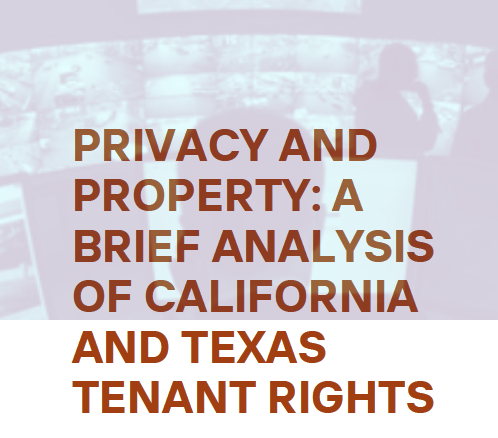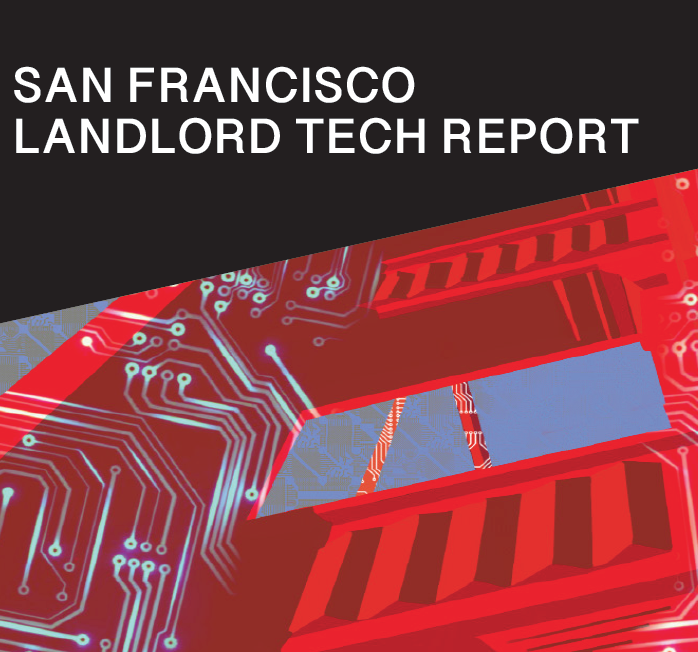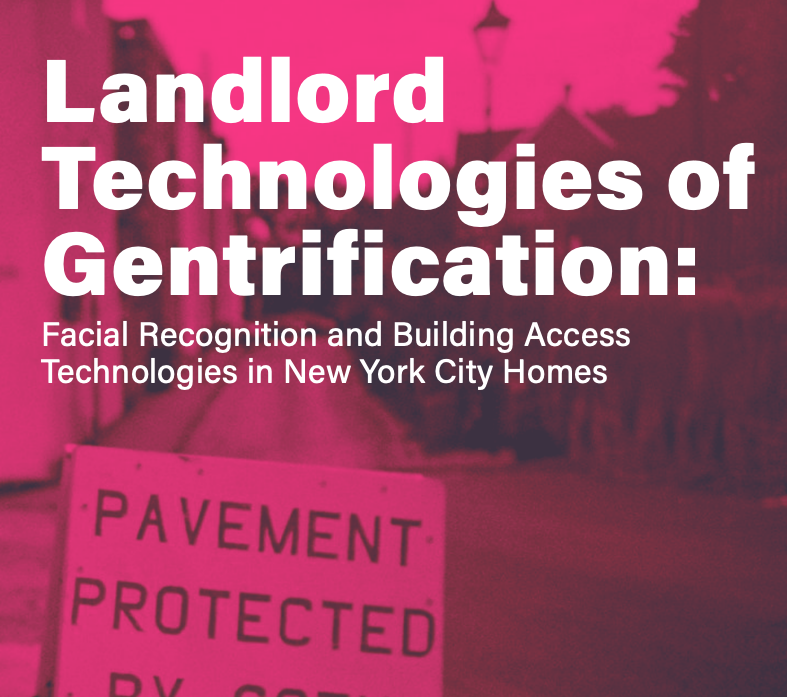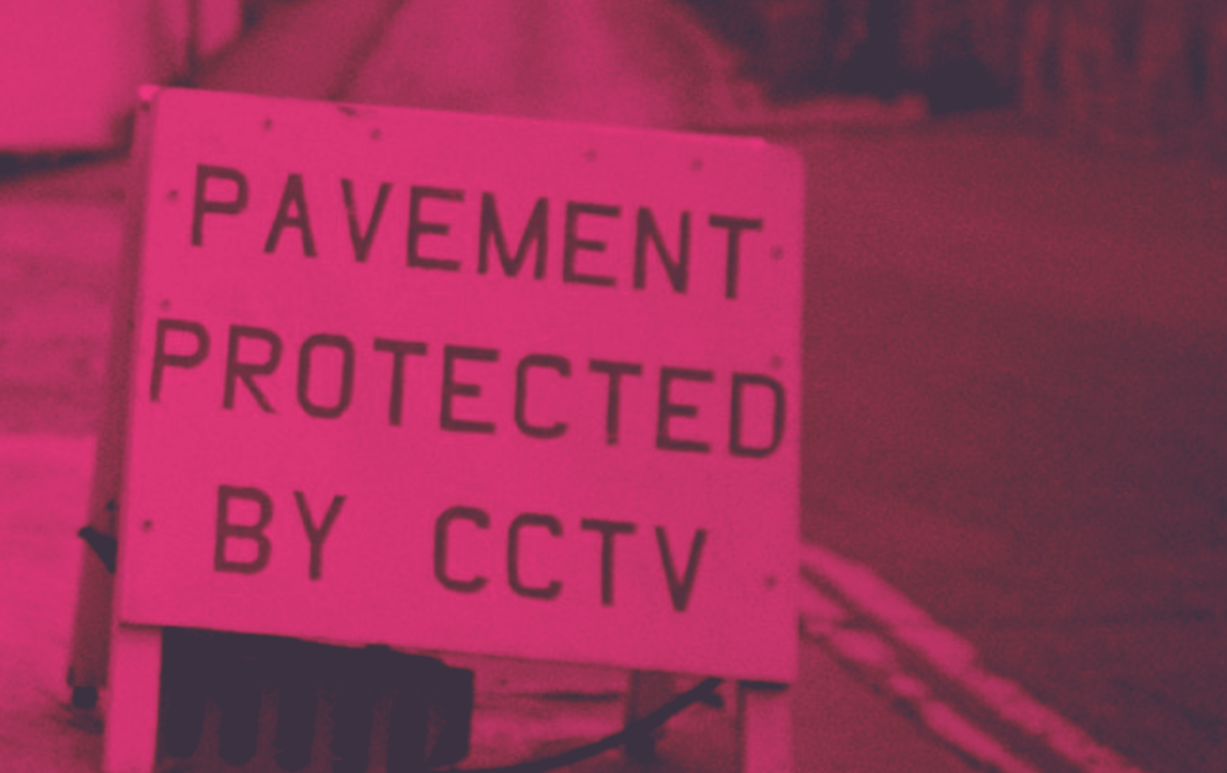
Landlord Tech Watch
Landlord Tech Watch is directed by Erin McElroy at University of Washington and is hosted through the Anti-Eviction Lab. It involves collaboration with the Anti-Eviction Mapping Project, [people.power.media], and the OceanHill-Brownsville Alliance. The group works to produce scholarship, popular education materials, and workshops related to the property technology industry.
What is landlord tech and what are its harms?
-

What is Landlord Tech?
Landlord Tech—what the real estate industry describes as residential property technology, is leading to new forms of housing injustice. Property technology, or “proptech,” has grown dramatically since 2008, and applies to residential, commercial, and industrial buildings, effectively merging the real estate, technology, and finance industries. By employing digital surveillance, data collection, data accumulation, artificial intelligence, dashboards, and platform real estate in tenant housing and neighborhoods, Landlord Tech increases the power of landlords while disempowering tenants and those seeking shelter.
-

Do You Have Landlord Tech in Your Home?
Help organizers and tenants push back against invasive landlord tech by sharing your experiences about the ways that your building and neighborhood is installing technology. Has your landlord introduced new tech for managing your building? For instance, are there new cameras that have been installed? Have payment, notification, or screening systems changed? Has access to your building changed, for instance you no longer have a key? Have new security cameras been installed in your neighborhood, or are apps being used in your neighborhood to snitch on you or your neighbors? Are there lockboxes outside your home indicating new short term rentals? Please fill out this survey and let us know.
-
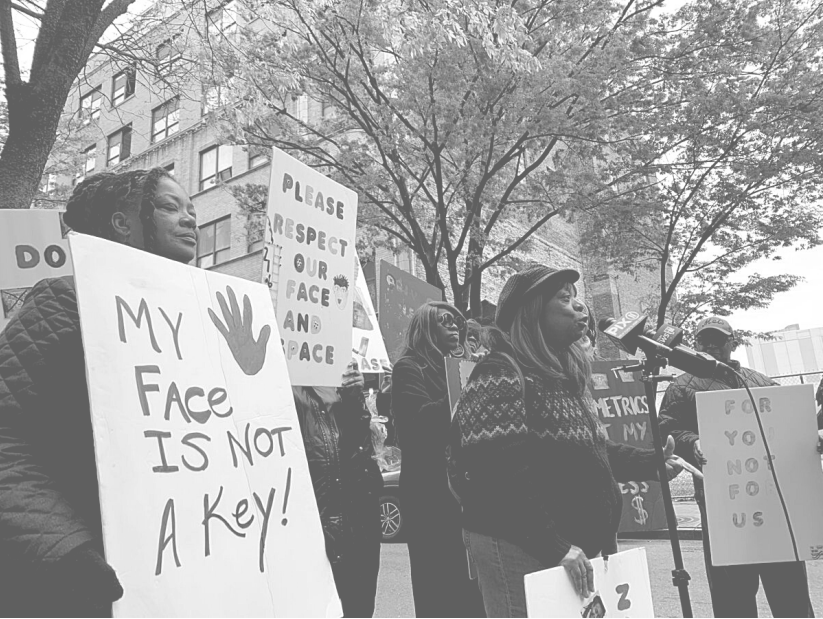
Organize
Learn from the Ocean Hill Brownsville Alliance on how they organized to keep landlord tech from being deployed in their home. The goal is to “Equip members of gentrifying neighborhoods with the knowledge of artificial intelligence technology, biometric collecting systems, hardware, apps, and automated decision making systems. Through workshops, collaborative art sessions and coaching we plan to instill the confidence and information on tech advancements and policy needed for community members to advocate for themselves and to have agency over the spaces they occupy and call home.”
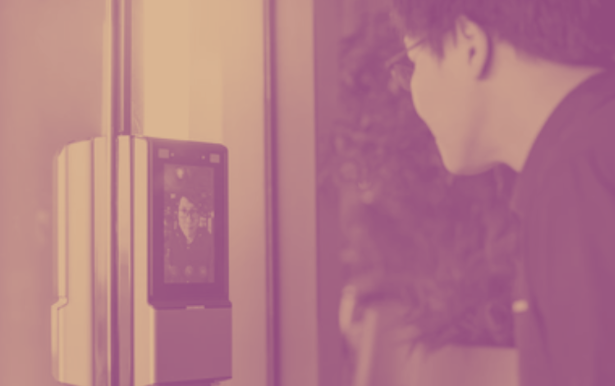
Our Research
Reports
Check out the reports that we’ve created to better highlight landlord tech harms from housing justice framework.
-
While often proposed for the purpose of tenant security, surveillance cameras can be an imposing and intrusive force in both public and private housing contexts that may jeopardize tenants’ biometric privacy. Lacking strong federal guidance regarding video surveillance, state policies and their controlling principles are the primary determinant factors regulating camera use and installation. An analysis of California and Texas civil and property codes reveal that the degree of protection granted by California’s laws creates a more privacy-oriented defense for tenants challenging camera installation, while Texas tenants may find themselves more dependent on property-based claims. Additionally, both California’s CCPA and Texas’ CUBI Act create limited ability for tenants to control biometric data collected by cameras when compared to Illinois’ BIPA.
-
This report examines the increasing deployment of landlord technologies in San Francisco (SF) housing and the problems this creates and intensifies. These technologies include facial recognition, closed-circuit television (CCTV) cameras, and other algorithmic, biometric, and app-based building access technologies specifically designed to be deployed in tenant housing and surrounding public and private space. As researchers with the Anti-Eviction Lab and the Anti-Eviction Mapping Project, we map the genealogies and geographies of these surveillance systems, looking at intersections of surveillance, carcerality, and gentrification.
-
This report examines the increasing deployment of landlord technologies in New York City (NYC) housing, and the problems this creates an intensifies. These technologies include facial recognition, closed-circuit television (CCTV) cameras, and other algorithmic, biometric, and app-based building access technologies specifically designed to be deployed in tenant housing and surrounding public and private space. We map the genealogies and geographies of these surveillance systems, looking at intersections of surveillance, carcerality, and gentrification. In addition, we look at why it is that New York has become an epicenter of what the real estate industry describes as the “property technology,” or the “proptech” industry. This term encompasses the platforms, systems, algorithms, and data regimes connecting the real estate and technology industries in residential, commercial, and industrial buildings.
Writing
-
Peer Reviewed Scholarship
The Work of Landlord Technology: The Fictions of Frictionless Property Management
Erin McElroy
Environment and Planning D: Society and Space
”Dis/possessory Data Politics: From Tenant Screening to Anti-Eviction Organizing.”
Erin McElroy
International Journal of Urban and Regional Research
”Automating gentrification: Landlord technologies and housing justice organizing in New York City homes.”
Erin McElroy and Manon Vergerio
Environment and Planning D: Society and Space
”Which Information Matters? Measuring Landlord Assessment of Tenant Screening Reports.”
Wonyoung So
Housing Policy Debate -
Public Scholarship
Read public scholarship from project members.
”Automating Gentrification in Times of Crisis.”
Erin McElroy
Just Tech, Social Science Research Council
”Prison Tech Comes Home.”
Erin McElroy, Meredith Whittaker, and Nicole Weber
Public Books
”Organizing as Joy: An Ocean-Hill Brownsville Story, with Tranae Moran and Fabian Rogers.”
Logic Magazine
”Keeping an Eye on Landlord Tech.”
Erin McElroy, Wonyoung So, and Nicole Weber
Shelterforce
”Landlord Tech in Covid-19 Times.”
Erin McElroy and Wonyoung So
Metropolitics
”COVID-19 Crisis Capitalism Comes to Real Estate.”
Erin McElroy, Meredith Whittaker, Genevieve Fried
Boston Review
”Atlantic Plaza Towers tenants won a halt to facial recognition in their building.”
Tranae' Moran
AI Now Institute Medium
”Exclusive Exposé: The Wild West Of Landlord Technology”
Joseph Smooke, Dyan Ruiz
[people.power.media]
”Disruption at the Doorstep.”
Erin McElroy
Urban Omnibus
Landlord Tech Watch is crowdsourcing information about how landlords are surveilling people in and around their homes and we need your help!
Information about tenants can be used in eviction proceedings, built into anti-tenant tech, or even sold for profit. It’s exploitative, unjust, and needs to stop!
